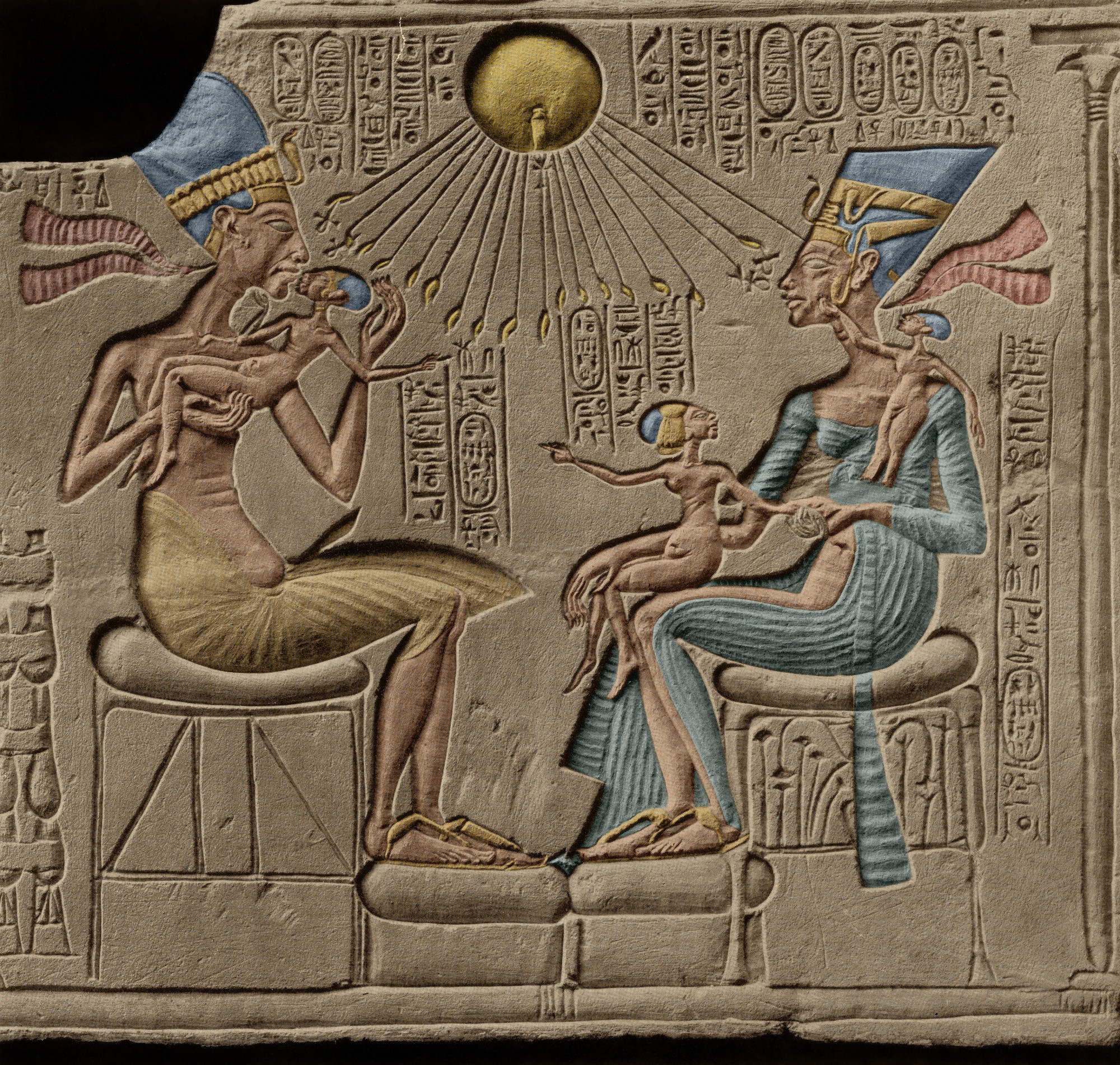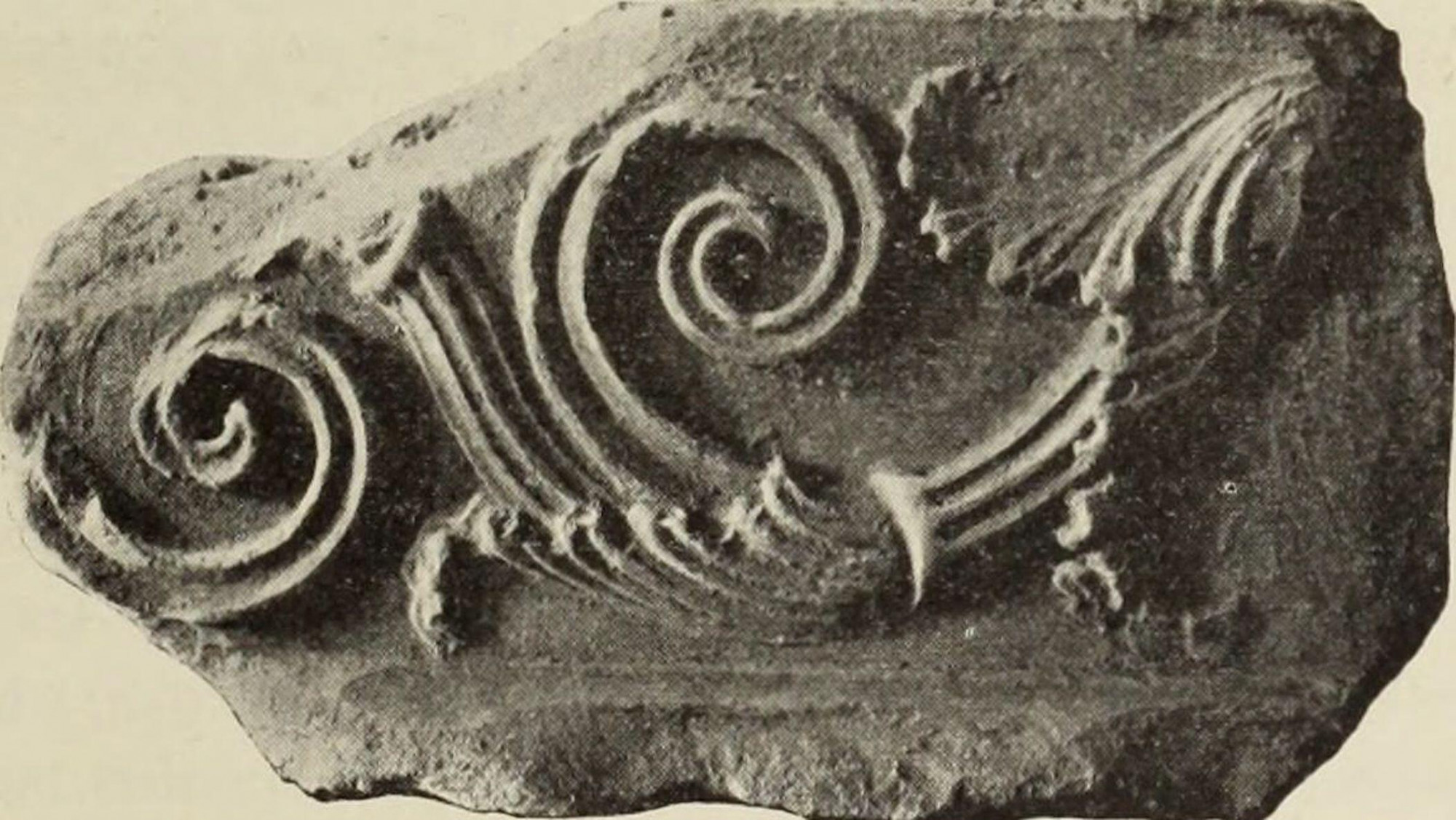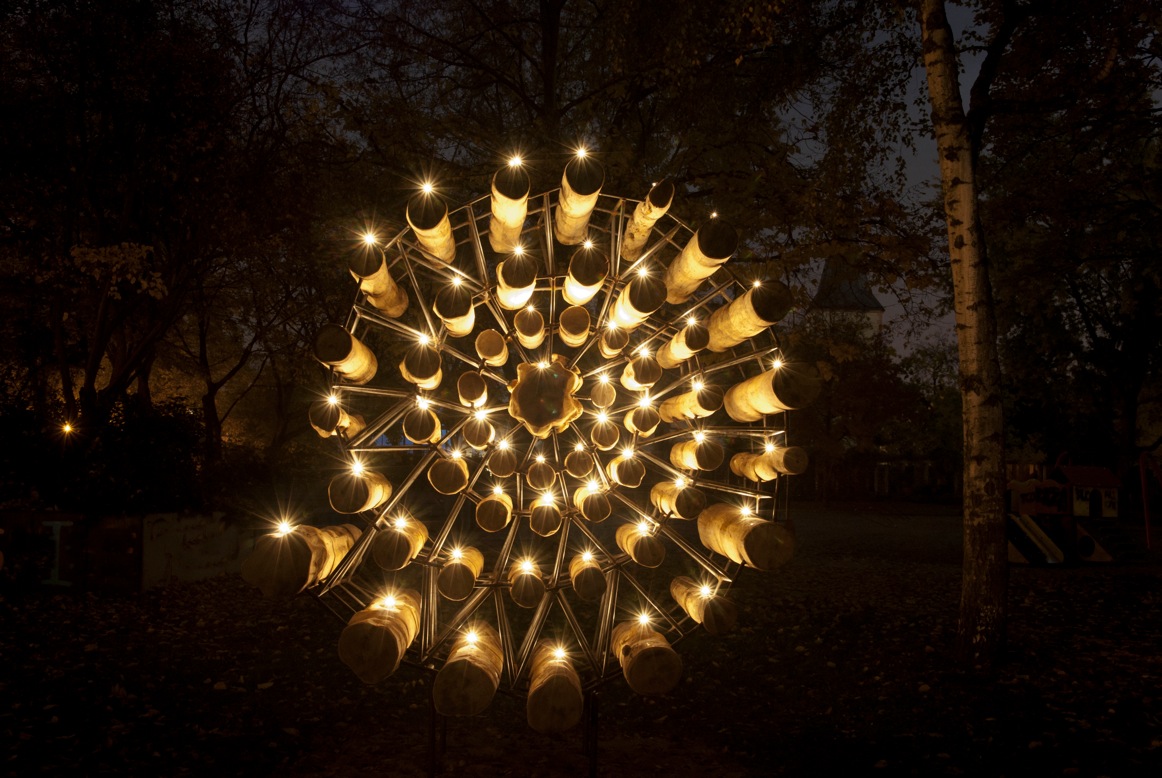Fossils and Art
Text: Hendrik Hackl, Ute Maag (ubibene magazin)
Translation: Peter Catchpole (express english)
Photos: Elles Magermans, Hendrik Hackl, stockphotos
INTRODUCTION
A Fossil as a an art object? The renown German artist Mary Bauermeister, pioneer of the late Fluxus-Movement, remarked "Some assume, they need paint and a brush, marble and a chisel, or clay and plaster to create artworks. However, they tend to forget the wealth and richness of nature itself”.

Wall sculpture - BUCKLAND'S WINGS - 180 x 60 cm - ammonite, olive wood
For thousands of years mankind has been fascinated by such “curious, strange rock forms” – they have collected them, used them as talismans, and jewelry. Fossils have always been decorative objects, family heirlooms, tombstone embellishments and somewhat of a mystery. For a long time simply inexplicable, legendary and interwoven with myths and naturally inspiring.
Cave paintings reveal how Mankind has depicted such images in an artistic form, they have named them after their gods, utilized them as medicine, religious symbols and spiritual objects. They still influence artists, designers, architects and master builders, authors and film makers.
Giant bone and teeth finds give rise to legends, sagas and fairy tales, even musical pieces are dedicated to these curious “Steintier” (petrified animals) – simply magic these fossils.

Egyptian wall relief - Echnaton and Nofretete
Why are people so fascinated with these fossil findings? Is it the unexplained origin of these prehistoric artifacts? The way they look? A possible clue to tracing our own past? The imprint of a bygone era? The earliest recorded writing on this subject was by Amenophis IV., A.K.A Echnaton (1400 BC), the Egyptian emperor, well known for his cultural, religious, and in particular for his artistic reforms, wrote: "It`s not the actual fossil itself we admire and worship but rather the being within that it manifests”.
AMMONITE ART
For a long period of time our ancestors were not aware of the aspect, that these „rich in content“ stones were not only „things“ but rather erstwhile living creatures. Living animals and plants of the time in their nearby surroundings looked somewhat different. The petrified finds were strange – the creatures in the “stones” were largely unknown. The irresistible attraction to their rare esthetic beauty was more than enough to make some of them objects to be collected. Thanks to their spiral form and well preserved shells, ammonites had become popular even in prehistoric times. An unknown prehistoric artist who painted a fossilized "Snail" seems to have studied the spiral form exactly, before deciding to draw an ammonite on the wall of his cave around 15,000 BC. His clearly recognizable illustration is one of the first of its kind and was discovered in the Grotte de l'Ammonite near the French town of Angouleme.

Ammonites with a strong surface relief were used as ornamental stamps
Artistic and handcrafted processing of ammonites can also be found on early jewelry design. Time and again archaeological excavations have revealed evidence of drilling and craftsmanship carried out on fossils, which were most likely worn on a leather strap as Talisman/Amulett. Early evidence includes reindeer hunting camps during the early paleolithic era in Kesslerloch in the Thayngen area of Switzerland and are between 13,000 and 11,000 years old.
Explorers in the "Cuevas de los Manos" in Patagonia came across 8,000 year old clay fragments from the Mesolithic era (middle stone age period) Toldensichen culture. The potters utilized especially distinctive ammonites to decorate and artistically embellish their pots and storage vessels.
There have been endless examples in past millennia, when viewed historically, to show that fossils have always held a certain significance to humans just as they still do today.
EARLY (PRE-) HISTORY
Whether prehistoric tomb excavations revealed „only“ a possession of great significance of a deceased emperor or tribal leader - a decorative piece, a collectors object just as people enjoy collecting fossils today - or whether religious, cult or magical powers were attributed to these burial gifts and offerings is still not thoroughly explained.
One thing is for sure: The 3 extremely broad categories of nature, art and spirituality share a close relationship with one another and fossils embrace them all
Did people embed ammonites into their house walls out of superstition? Or were they merely improvements in appearance and served as adornments to the building? Are the replicated ammonites on pillars in churches remains of a once pagan ammonite cult? Or are they simply early art in construction and architectural adornment?

Corinthian wall relief
Neolithic craftsmen artists sculptured Bernstein to create cult objects and for use in rituals. During excavations detailed Bernstein figures have been found which indicate an ancestor worship cult during early history. Carved phallic figures out of fossilized tree resin have been found which most probably were used as potency symbols and talismans for fertility. It was not until much later that amber gained its importance as a gemstone, which has remained to this very day.
LEGENDS, MYTHS AND SAGAS
Humans have always been fascinated by stories and the art of story-telling. Legends, myths and sagas were mostly passed on from one generation to the next by word of mouth and often embellished with a lot of imagination and only later collected and written down. Fossil sediments have probably provided the basis for numerous fairy tales, sagas and legends.

The dragon slayer
Oversized finds of mammoth bones, teeth and other prehistoric mammals nurtured the belief, that these were in fact skeletal remains of giant human-like beings. The similarity between these finds and the human skeleton has inspired story tellers throughout history to create increasingly imaginative stories and legends to this day. We still encounter some of these in modern phantasy stories, fairy tales and novels.
Around the same time, when legends of giants appeared in stories and in songs, also flying dragons and lindworms with huge teeth and even more fearsome beings were created. The basis of these stories, which normally involve a human hero, playing a major role, is most probably floating bone finds of water based dinosaurs. Observations written down “A body like a snake threaded through a tortoise” suggested that indeed due to the similarity the bones stemmed from sightings of a plesiosaur. The long pointed, tapered paddles of the prehistoric predators were most likely indicated as wings of the dragons.

Plesiosaurus hawkinsii
At that time the lack of knowledge about prehistoric flora and fauna led many to integrate the fossil finds into their existing world view by means of religion, superstition and the mystical stories, full of phantasy, that arose from them. Not until the age of enlightenment when early attempts were made to decipher nature`s mysteries through research, cautious steps were made to ask the question “Where do these creatures, enclosed in those “stones” come from?”
Questions such as „where do these mussels in the mountains originate?” became the subject of a constant debate starting in the 15th century, leading to fierce disputes between natural scientists and the powerful Catholic church. The Biblical history of creation was accepted then, as it still is in some circles today, regarded as authoritative and unassailable.
LEONARDO DA VINCI'S ROLE
University scientists, intellectuals and those in the Arts became occupied with the origin of the fossilized objects of a previous era. They carried out studies and made notes on their observations. Leonardo da Vinci, one of the most important artists of the Renaissance, wrote in his notes between 1508 and 1518:
“Seeing as these objects are far older than the letters of the alphabet themselves, it should come as no surprise that, to date, there has been nothing written or recorded about how the seas mentioned (could have) extended over so many countries.
However, there is ample proof and we are satisfied with the power of such evidence that these objects originated in the salt water and are now to be found in mountain areas, occasionally far away from the seas.”
Today we know that it is not at all simple to explain exactly how a once living creature can transform into a stone-hard, fossilized object. This is indeed a rare exception in nature`s ongoing process of decay and rebirth . Usually, after dying, organisms decompose into their component elements. There must have been some very special conditions, at work, in order to at least transform the solid remains of prehistoric sea creatures and survive for millions of years. However, many animal remains of ancient marine inhabitants sank to the former mud sand seabed and were gradually covered with further sediments. Being airtight they were “conserved for eternity” and in time due to compression from sediment above and movement of the earth surface geological “plates” they gradually become fossilized.
THE DISCOVERY OF SEA BED FOSSILS FOR BUILDING WORKS
Millions of years later, architects and master builders discovered this petrified, fossil-rich seabed for themselves and their work. They realized that sea bed fossils could greatly enrich, beautify and increase the originality of their creations on houses and inside homes, public buildings, churches and palaces.

Sollnhofen limestone with ammonite
The fossils were cut into slabs and plates, were sanded and polished in order to reveal their exciting prehistoric interior. Treuchling and Rupolding marble, Sollnhof (near Stuttgart) plates and ammonitico are often used as flooring, wall paneling and window-sills. Holzmaden limestone and slate with their attractive deposits of gold colored pyritized ammonites can often be seen as timeless modern wood paneling.
THE AMBER ROOM
The Amber Room (“Bernstein Zimmer”), which has been untraceable since 1945, is most likely the most famous example of fossils being used in interior design. The first King of Prussia, Friedrich 1st, gave the order to the sculptor and architect Andreas Schleifer that the “room” be entirely made of amber, using only artistically designed amber wall paneling. Also known as the eighth wonder of the world, work on the Amber room began in 1706 and was at least partly later installed in the White Hall in the Berlin City Palace. This spectacular work of art was transferred to Russia, as part of a bartering agreement, and was provisionally first installed in the St Petersburg Winter Palace and then in all its full splendor in the Katarinen Palace in Zarskoje Selo.

Amber from the Swedish Amber Museum
In 1941 German soldiers seized the amber room contents, taking them to Königsberg/Kalingrad where they were partially exhibited after demolishing the amber room itself. As Soviet forces were advancing and due to increasing air raids those in charge decided to have the mosaics and panels packed into 28 cases. Since then they have disappeared without trace…
CINEMA, POP MUSIC AND DINOS
The cinema is a further form of engagement resulting in greater public interest into prehistoric creatures.
Filming of classic novels such as Gulliver`s Travels and his journey to the land of giants, Captain Nemo in his Nautilus in 20,000 Leagues Under the Sea, were very successful, with several follow-ups. Dinosaurs made it to the movie theaters in 1993. Stephen Spielberg`s Jurassic Park – has already reached its 6th follow up.
All are examples of the once feared, terrifying and disturbing dinosaur finds and unsettling creatures, fabled and mischievous, shrouded in legend and sinister tales. They all have celebrated a sensational comeback through their cinematic resurrection. Hardly any child is without a complete collection of “dino” figures on their shelves – even as cuddly toys. One is confronted almost daily with these prehistoric giants in all kinds of encounters be it prints of unsuspecting objects on all manner of both useful and useless items.

Dinosaurs of Rock'n Roll history - The Rolling Stones
The so-called dinosaurs of rock n roll history are quite literally threatened with dying out. A rare species is in danger of extinction as the few remaining musicians and bands with over 50 (almost 60!!) years on stage, with gigantic world tours and rigorous live performances finally retire from the stage. For example, a concert performance by the legendary Rolling Stones is certainly sold out most of the time long in advance, and not only on account of musical enjoyment. Visiting such events is also most exciting from a zoological point of view! Where else can you get a chance to watch fossils happily performing music on stage? Possibly only another meteorite impact can finally wipe out these “dinosaurs” – something future generations can look forward to!
During the 19th century famous composers such as Smetana and Mussorgski created so called “program music” (Programmmusik). Another representative of this new genre was the French musician and composer Camille Saint-Saëns and his composition “The Carnival of the Animals”.
In this remarkable composition, which was premiered on 9 March 1886, fossils again played an interesting role. The piece comprises14 short instrumental movements, each of which is interspersed by spoken contributions. In the 12th section, the theme of fossils is interpreted musically as representative of death, the transience of life – for the first time a xylophone is used in an orchestra – the xylophone’s debut! The metal plates of the instrument, struck with almost rock-hard wooden mallets, generate a whirling melody with an acoustic association of dancing, clattering, rattling fossilized bones.
HENDRIK HACKL

The Morroccan Sahara
A little more than one hundred years after the premiere of this piece of music, the Mannheim artistic craftsman Hendrik Hackl found his first ammonite in the hot desert sands near the town of Erfoud in the Moroccan Sahara. He was first impressed by the outwardly appealing aesthetic form of the “stones” he found, and bought a few more cut and polished specimens from a fossil dealer friend. Alongside the beauty and colorfulness of the smoothly worked ammonites, the artist was also intrigued that each had their unique character with a great variety of age, shape, size and form. He learnt that he was holding a prehistoric octopus from the Jurassic Sea in his hands. About 165 million years old! An almost inconceivable look back into the distant past!!

Unique jewelry object - ammonite (Russia, 180 million years old), 18ct gold, rubber band
This first encounter with prehistoric fossil in North Africa also occupied the trained dental technician further at home in Mannheim and he began to embed and sculpture some of his recently acquired fossils into wearable jewelry pieces, soon afterwards both as free-standing and wall-mounted art objects and sculptures. The artist regards each individual prehistoric find as petrified contemporary witnesses of evolution and the approximately 3. 5 billion-year-old history of our human body. He places it at the center of his work, transforms it into a work of art – helping him, so to speak, to a second, new life.
The Mannheim sculptor has been working with materials spanning millions of years for over 3 decades now. His artistic approach defines itself through his diverse manual craft skills and abilities. His broad spectrum of training and experience in the fields of craftsmanship and manual dexterity, enable him, to combine craft, design, art and technology in his objects in an appealingly esthetic manner. Now his artistic fossil preparations also have a unique global reputation. “It is important to me to translate this unbelievable fascination of history into art”, he says. And in doing so he also inspires other people who stand in awe before his works. His works ennoble the history of evolution in a very original way by adding little but arranging, editing and thus defining the objects in a new way, in a way that is different from what has generally been previously known.

Wall sculpture - 180 x 70 cm - petrified fish from Brazil, 115 million years old, slate
HISTORY IS ALIVE
An ammonite is a fossil, a cephalopod that became fossilized millions of years ago. This Ammonite tells a story of Earth`s origins, of itself and ultimately also of ourselves, who as humans – thought of in the dimensions of earth’s history - have only “recently” populated the earth. The evolution and development of flora and fauna, can be precisely established on the basis of such finds allowing us to conjure a picture of earlier times, to look into the past.
ART MEETS EVOLUTION
Hendrik Hackl throws new light onto the complacent human centered viewpoint and offers a new concept of Earth`s history and evolution with profound knowledge and enthusiasm which is most contagious. His aesthetically pleasing, partly humorous works are snapshots of evolution. Here the past comes to life, artistically highly exciting and fascinating and at the same time timelessly relaxed.

Sculpture - OLEARUM V - 140 cm - ammonite, olive wood, steel
ETERNAL MATERIALS
Hendrik Hackl combines his fossils with various natural materials which are themselves inherently attractive. Thus olive wood lends itself especially as a base or backcloth of the sculpture itself. Due to its aging, knotty and gnarled appearance and resilience/indestructible nature, the olive tree has become a symbol of growth. A warm material, supple and tender yet with a constant strength and stability. Hendrik Hackl utilizes slate, petrified wood or iron to provide a distinctively unmistakable fitting frame for every fossil. These materials all share common character traits: they are solid, strong, mature, undamaged and durable.
TIMELESS ART OBJECTS
Hendrik Hackl`s diverse works with their timeless design are simply captivating. Fossil finds millions of years old from all over the world are the essential core of every creative work of art. Whether sculpture, a wall mounted art object or piece of jewelry - each one is a unique creation, all unique pieces a feast for the eyes wherever it is placed.

Art sculpture in public space - AMMONITES KAEVERNDALENSIS - H 350 cm